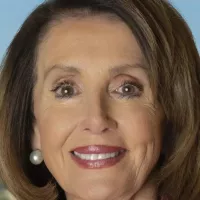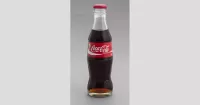Discover the career path of Jim Cramer, from the first major opportunity to industry-changing achievements.
Jim Cramer is a well-known American television personality, author, and former hedge fund manager. He hosts CNBC's Mad Money and is an anchor on Squawk on the Street. After Harvard, he worked at Goldman Sachs before starting his hedge fund, Cramer Berkowitz. He also co-founded TheStreet.com, contributing articles from 1996 to 2021. Cramer gained further recognition with Mad Money, which premiered in 2005. He has authored several books on finance and investing, offering his perspectives and strategies for navigating the market.
December 2006: Stewart Challenges Cramer on Short-Selling Contradiction
During a conflict between Jon Stewart and Jim Cramer, Stewart presented video clips from December 2006 in which Cramer discussed spreading false rumors to drive down stock prices and encouraged short-selling by hedge funds. Stewart challenged Cramer to protect viewers from this behavior and suggested changes to his reporting approach.
December 2006: Hedge Fund Activities to Manipulate Stock Prices
In December 2006, Jim Cramer described activities, some of debatable legality and others illegal, used by hedge fund managers, including himself, to manipulate stock prices. He explained how he could use as little as $5 million to push stocks higher or lower and encouraged hedge funds to engage in this type of activity because it is a "very quick way to make money."
December 22, 2006: Cramer Discusses Spreading False Rumors
In a video clip from December 22, 2006, Jim Cramer talked about spreading false rumors to manipulate stock prices. He also encouraged hedge funds to engage in short-selling as a means to generate returns, calling it a very quick way to make money.
August 3, 2007: Cramer's Rant Calling for Interest Rate Cut
On August 3, 2007, Jim Cramer made a plea for the Federal Reserve to cut interest rates, criticizing the Fed Committee by saying "They're nuts. They know nothing. This is a different kinda market. And the Fed is asleep."
August 7, 2007: Federal Reserve Meeting on Market Conditions
On August 7, 2007, The Federal Reserve Open Markets Committee held a meeting where Dennis Lockhart, president and CEO of the Federal Reserve Bank of Atlanta, mentioned Jim Cramer's market observations which elicited laughter from other participants during his comment.
August 28, 2007: Release of Federal Reserve Meeting Transcript
On August 28, 2007, the transcript from the August 7, 2007, meeting of the Federal Reserve Open Markets Committee was released. It showed that Dennis Lockhart's mention of Jim Cramer's market observations elicited laughter from participants.
March 11, 2008: Cramer's "Mad Money" Bear Stearns Recommendation
On March 11, 2008, during an episode of Cramer's show Mad Money, in response to a viewer's question about concerns regarding Bear Stearns' liquidity, Cramer stated, "No! No! No! Bear Stearns is not in trouble. If anything, they're more likely to be taken over. Don't move your money from Bear."
March 17, 2008: Cramer Clarifies Bear Stearns Comments
On March 17, 2008, Jim Cramer clarified that his previous statements about Bear Stearns were related to the liquidity of accounts held at the firm, rather than a recommendation for the common stock. He stated that he was allaying concerns about account holders' liquidity in their Bear Stearns brokerage accounts.
September 19, 2008: Cramer Blames Federal Reserve for Housing Bubble
On September 19, 2008, during an appearance on Hardball with Chris Matthews, Jim Cramer blamed the Federal Reserve for the United States housing bubble.
March 12, 2009: Cramer Admits Mistakes on Bear Stearns Calls
On March 12, 2009, during a conflict with Jon Stewart on The Daily Show, Jim Cramer admitted that he made mistakes regarding his Bear Stearns calls.
September 15, 2020: Cramer Addresses Pelosi as "Crazy Nancy"
On September 15, 2020, during a TV interview with U.S. Speaker of the House Nancy Pelosi, Jim Cramer referred to her as "Crazy Nancy" and defended his actions in subsequent tweets. He later apologized for using the phrase.
Mentioned in this timeline

Donald John Trump is an American politician media personality and...

Nancy Pelosi is a prominent American politician notably serving as...

Coca-Cola is a globally recognized cola soft drink produced by...
Fox News Channel FNC is a conservative American news and...
The United States of America is a federal republic located...

Barack Obama the th U S President - was the...
Trending
8 days ago Jalen Williams' Impact: Thunder, Warriors Matchups, Dort's Future, Injury Return
Keldon Johnson is an American professional basketball player currently playing for the San Antonio Spurs in the NBA Prior to...

6 months ago Brokeback Mountain's 20th Anniversary: Challenging Hollywood and impacting audiences, starring Heath Ledger.

6 months ago Sarah Sherman's SNL Checks Mistakenly Sent to Gilda Radner's Estate: A Sobbing Revelation

Lily Allen is an English singer songwriter and actress known for her distinctive voice and candid lyrics She gained prominence...

8 days ago Jesse Plemons discusses 'Bugonia', Oscar buzz, and career from child actor.
Popular

Candace Owens is an American conservative political commentator and author...

Ilhan Omar is an American politician currently serving as the...

XXXTentacion born Jahseh Dwayne Ricardo Onfroy was a controversial yet...

Tom Cotton is an American politician and Army veteran currently...
The Kennedy Center Honors are annual awards recognizing individuals and...

Kelsey Grammer is an accomplished American actor producer and singer...
